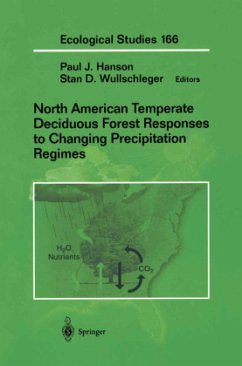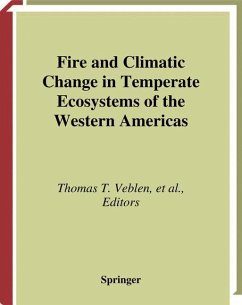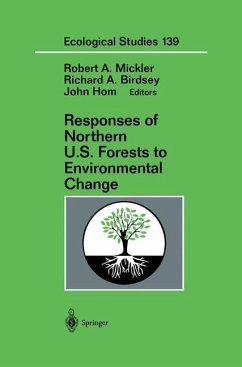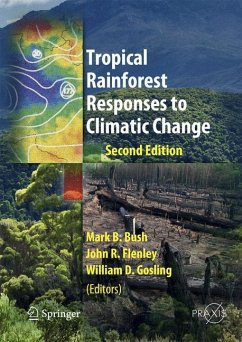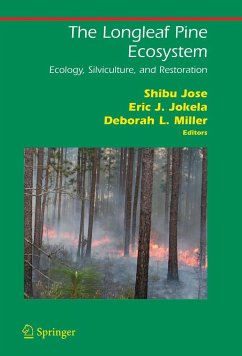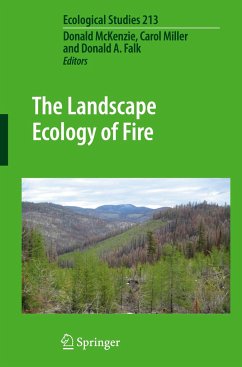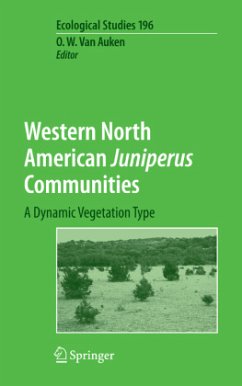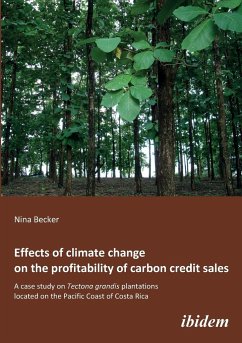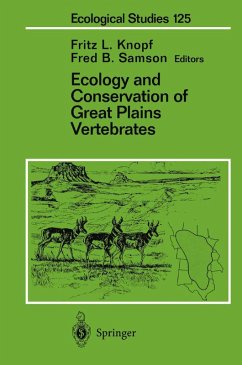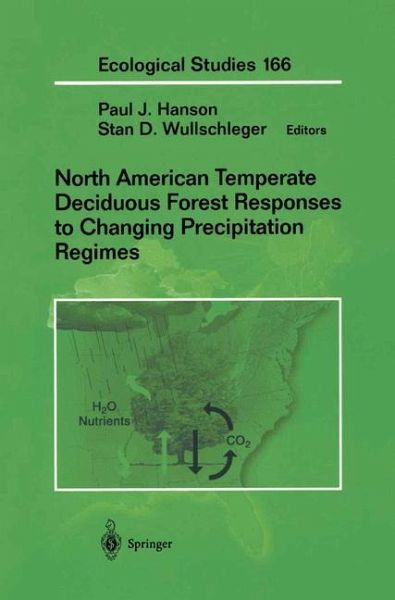
North American Temperate Deciduous Forest Responses to Changing Precipitation Regimes
Versandkostenfrei!
Versandfertig in 1-2 Wochen
77,99 €
inkl. MwSt.

PAYBACK Punkte
39 °P sammeln!
Large-scale experimentation allows scientists to test the specific responses of ecosystems to changing environmental conditions. Researchers at Oak Ridge National Laboratory together with other Federal and University scientists conducted a large-scale climatic change experiment at the Walker Branch Watershed in Tennessee, a model upland hardwood forest in North America. This volume synthesizes mechanisms of forest ecosystem response to changing hydrologic budgets associated with climatic change drivers. The authors explain the implications of changes at both the plant and stand levels, and the...
Large-scale experimentation allows scientists to test the specific responses of ecosystems to changing environmental conditions. Researchers at Oak Ridge National Laboratory together with other Federal and University scientists conducted a large-scale climatic change experiment at the Walker Branch Watershed in Tennessee, a model upland hardwood forest in North America. This volume synthesizes mechanisms of forest ecosystem response to changing hydrologic budgets associated with climatic change drivers. The authors explain the implications of changes at both the plant and stand levels, and they extrapolate the data to ecosystem-level responses, such as changes in nutrient cycling, biodiversity and carbon sequestration. In analyzing data, they also discuss similarities and differences with other temperate deciduous forests.
Source data for the experiment has been archived by the authors in the U.S. Department of Energy's Carbon Dioxide Information and Analysis Center (CDIAC) for future analysis and modeling by independent investigators.
Source data for the experiment has been archived by the authors in the U.S. Department of Energy's Carbon Dioxide Information and Analysis Center (CDIAC) for future analysis and modeling by independent investigators.





